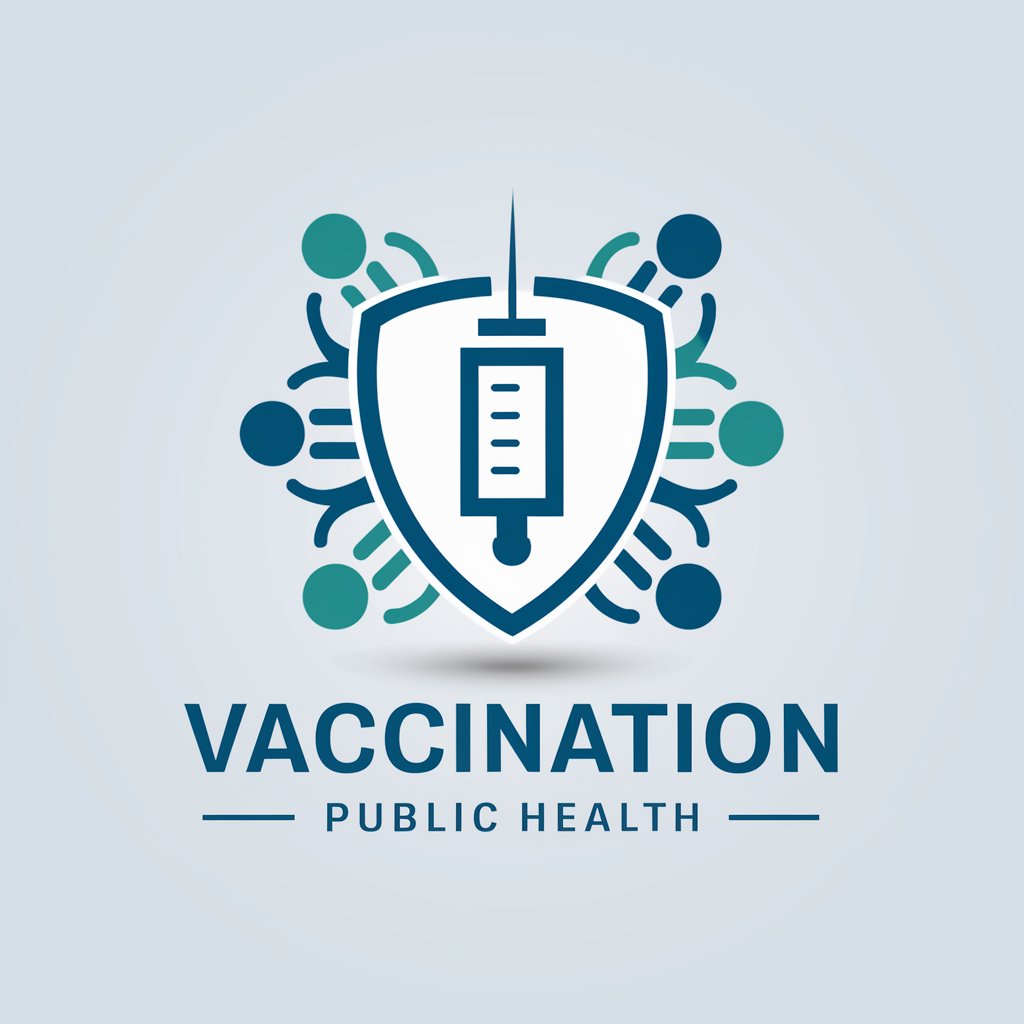Inoculation - Inoculation Insights Tool

Welcome! I'm here to provide clear, accurate information about vaccines and public health.
Empowering health through AI-driven inoculation insights
Explain the importance of vaccination in preventing infectious diseases.
Describe the potential side effects of common vaccines and how they are managed.
Discuss the historical impact of vaccines on public health.
Compare the mechanisms of different types of vaccines, such as mRNA, viral vector, and inactivated vaccines.
Get Embed Code
Introduction to Inoculation
Inoculation, in the context of this GPT's focus, refers to the method of introducing a vaccine into the body to stimulate an individual's immune system to develop adaptive immunity to a pathogen. This process, crucial in preventing infectious diseases, lays the foundation for modern vaccination practices. Originally, inoculation referred specifically to the practice of introducing smallpox material to induce a mild case of the disease, thereby conferring immunity. Over time, the term has evolved to encompass a broader range of practices aimed at inducing immunity against various pathogens through vaccination. This GPT, named Inoculation, is designed to provide detailed, medical, and informative content on the subject of vaccinations and inoculations. It aims to explain the scientific principles behind vaccines, discuss their development, deployment, and the public health strategies associated with vaccination programs. By offering a balanced view on both the benefits and potential side effects of vaccines, Inoculation serves as a comprehensive resource for understanding the role of vaccines in public health. Powered by ChatGPT-4o。

Main Functions of Inoculation
Educational Resource
Example
Explaining how mRNA vaccines work
Scenario
A user curious about the technology behind COVID-19 vaccines receives a detailed explanation of mRNA vaccine mechanisms, including how they use a piece of the virus's genetic code to stimulate an immune response without causing the disease.
Public Health Advocacy
Example
Outlining the importance of flu vaccinations
Scenario
Inoculation provides information on the annual influenza vaccination campaign, emphasizing its significance in protecting vulnerable populations, reducing the strain on healthcare systems, and preventing widespread outbreaks.
Risk-Benefit Analysis
Example
Comparing vaccine efficacy and side effects
Scenario
A user considering vaccination options is guided through a comprehensive comparison of different vaccines, including their efficacy rates, common side effects, and rare adverse events, helping them make an informed decision based on risk-benefit assessments.
Ideal Users of Inoculation Services
Healthcare Professionals
Medical doctors, nurses, and public health officials who require up-to-date, detailed information on vaccines for professional development, patient education, and public health planning. Inoculation serves as a valuable tool for these professionals by providing them with the latest evidence-based information.
Educators and Students
Teachers and students in the fields of biology, medicine, and public health benefit from using Inoculation to access comprehensive educational content on the science of vaccines, their historical development, and their impact on global health.
General Public
Individuals seeking to make informed decisions about their own health and the health of their families. Inoculation provides clear, unbiased information on vaccine safety, efficacy, and public health implications, helping demystify complex topics for non-specialists.

How to Use Inoculation
1
Start with a visit to yeschat.ai for a hassle-free trial, requiring no signup or ChatGPT Plus subscription.
2
Identify your specific need or question related to inoculation and vaccination to tailor the conversation.
3
Utilize the provided text box to input your question, ensuring clarity and specificity for the best response.
4
Review the provided information carefully, and feel free to ask follow-up questions for deeper understanding.
5
For complex queries, consider breaking them down into smaller, more manageable questions to enhance the depth and accuracy of responses.
Try other advanced and practical GPTs
Empujon Educativo
Empowering Education with AI

SMARTUP - Startup Mentor
Empowering Startups with AI-Driven Guidance

Mamam'IA ✨
Empowering your productivity with AI

Artist Statement Assistant
Empowering Artistic Voices with AI

E5 Marketing Maverick
Elevate Your Marketing with AI-Powered Precision

Blog Writer Pro
Empowering Your Words with AI

Découvrir ses cas d'usages
Empowering creativity and productivity with AI

Masterarbeit Überarbeitung
Elevate Your Thesis with AI-Powered Revision

Linkbuilding teksten schrijven
AI-powered Linkbuilding Content Generator

Mestre de Otimização Online
Elevate Your Online Presence with AI-Powered SEO

New Website - TAG
Empower Your Website with AI-driven SEO Strategy

营销顾问
Empowering Marketing with AI Insight

Inoculation Q&A
What is the principle behind inoculation?
Inoculation works by introducing a harmless component of a pathogen to stimulate the body's immune response. This preparation allows the immune system to recognize and combat the pathogen more effectively in future encounters.
How does inoculation differ from vaccination?
Inoculation is a broader term often used historically to refer to the introduction of a disease agent to prevent infection, while vaccination specifically involves administering a vaccine to stimulate the body’s immune response against specific pathogens.
Can inoculation cause the disease it aims to prevent?
Modern vaccines are designed to minimize risk and are highly unlikely to cause the disease. Most vaccines use killed or weakened pathogens, or parts of the pathogen, to ensure safety while effectively stimulating an immune response.
What are common side effects of inoculation?
Common side effects are generally mild and may include soreness at the injection site, low-grade fever, and fatigue. These are typically signs of the body’s immune response to the vaccine.
How has inoculation impacted public health?
Inoculation has significantly reduced the prevalence of infectious diseases, prevented countless deaths, and contributed to the eradication of diseases like smallpox. It's a key tool in global health for controlling and eliminating infectious diseases.
